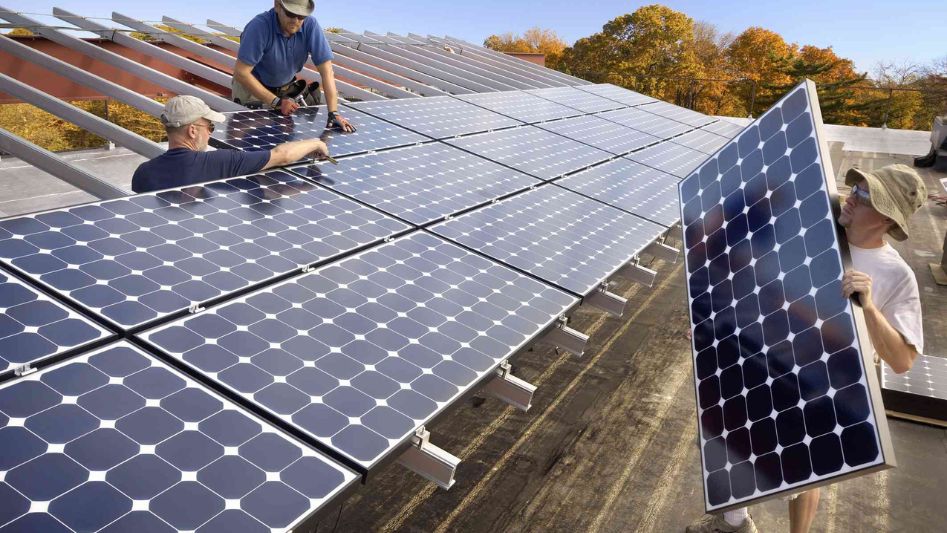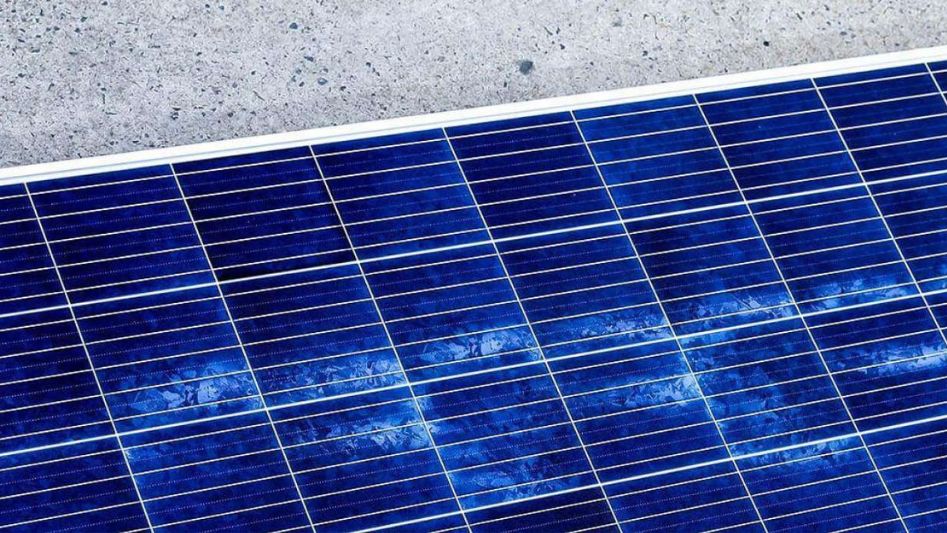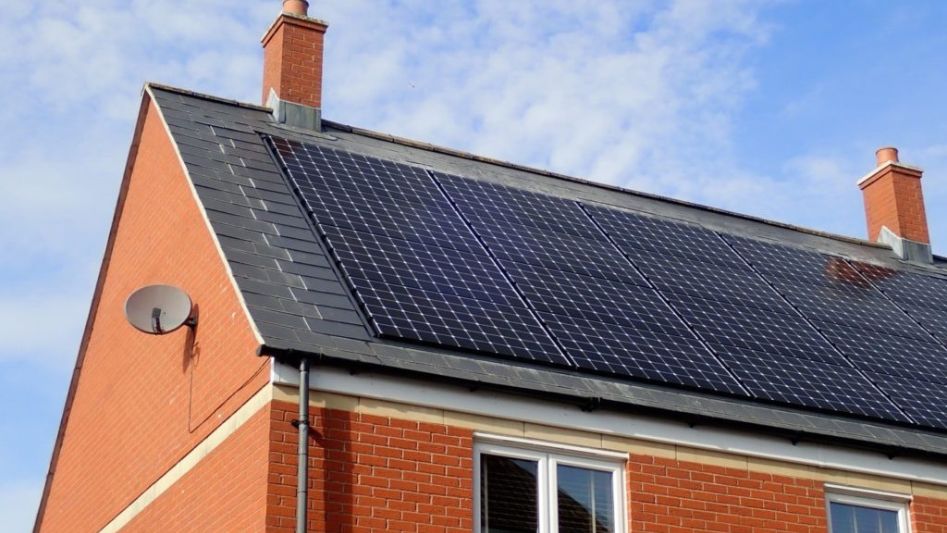There are many ways solar incentives can help you save money on your energy bills and protect our environment. Find out which incentives and rebates you qualify for.
As a result of a price reduction of 89% between 2010 and 2020, solar power has now become the “cheapest electricity in the history of the world.” However, regular customers still face challenges that make it difficult for them to install solar energy systems, such as the fact that the cost of a rooftop solar system may be out of reach for many households. According to EnergySage, a 10-kilowatt system that is capable of supplying the necessary amount of electricity to the typical house in the United States would cost $27,700 if tax credits and other subsidies are not taken into account. Because of this, the annual income of a new purchaser of rooftop solar in 2019 was around 113,000 dollars, which is almost twice the median income in the United States.

However, inhabitants with lower and moderate incomes stand to benefit the most from the transition to cleaner energy that is also cheaper. This is due to the fact that individuals with lower and moderate incomes spend three times as much of their income on energy as those with higher incomes. The income disparity in solar ownership is, thankfully, narrowing because of a combination of factors, including falling prices for solar panels and financial incentives offered by the government. 42% of new solar owners in 2019 earned less than 120% of their area’s median income, which is a significant criterion to encompass poor and moderate earnings. This is true despite the fact that the typical solar customer still earns more than the typical American.
Incentives provided by the government may considerably reduce the initial outlay of cash required to purchase a solar energy system and shorten the period of time it takes for the system to pay for itself. Without assistance from the government, the price of a kilowatt-hour (kWh) of electricity generated by a rooftop solar system in 2020 was between $0.11 and $0.16. This cost was reduced to between $0.07 and $0.09 per kWh with the assistance of federal subsidies, but it did not take into account fluctuating state incentives. With the price of power provided by utilities in the United States averaging $0.14 per kilowatt-hour (kWh), rooftop solar, when combined with government subsidies, becomes cost-competitive and cuts the cost of electricity by about 50 percent. If the typical American consumes 11,000 kWh of power each year, then the difference between spending $1,540 and between $770 and $990 on electricity each year is the difference between those two amounts.
What is a kilowatt-hour?
A watt is a unit of electricity, and a watt-hour is a measurement of the amount of power that is used over the course of one hour. If you turn on a light bulb that uses 100 watts of power and keep it on for an hour, you will have consumed 100 watt-hours of energy. If you leave a light on for ten hours without turning it off, you will have consumed one kilowatt-hour of electricity, which is abbreviated as kWh.
Solar Incentive Options for Homeowners
Over 2,000 federal, state, local, and utility-based incentives for renewable energy and energy efficiency are included in the Database of State Incentives for Renewables and Efficiency (DSIRE). These incentives range from special property tax assessments of solar energy systems granted by the state of Illinois to rebates for the installation of renewable energy supplied by Montana’s NorthWestern Energy utility company. The DSIRE was created by the American Council for an Energy-Efficient Economy (ACEEE), which is a nonprofit organization. While some tax credits are only available for commercial-scale installations, some are only available to residential users, while others are only available to solar installers.
Federal Incentives
The Federal Tax Credit for Solar Photovoltaics is the most important incentive for installing residential solar, and it has its roots in the first residential energy credit, which was created by the Energy Tax Act of 1978. That credit offered a tax credit equal to thirty percent of the cost of solar equipment, and it was the first incentive for installing residential solar. The Energy Policy Act of 2005 is responsible for the creation of the current investment tax credit, which has since been renewed and extended many times, the most recent of which will take effect in December 2020. In accordance with the plan, taxpayers have until the end of 2022 to claim a tax credit for an amount equal to up to 26% of the approved expenditures they incurred when purchasing a solar energy system for their home. Labor expenses, the cost of building and installing the system, as well as the cost of any connected pipe and wiring, are considered eligible charges. After the year 2023, the credit percentage for home solar systems will be reduced to 22%, and then it will be eliminated entirely.
Tax credits vs. rebates
A tax credit should not be confused with a refund. A decrease in the price of an item or service that may occur either at the time of purchase or as a reimbursement after purchase is referred to as a rebate. A tax credit might result in a decrease in the total amount of taxes owed by the taxpayer. In order to be eligible for a tax credit, you need to have a tax liability that is substantial enough for the credit to be applicable. For instance, if you are eligible for a solar tax credit of $5,000 but only owe $3,000 in taxes, you will only get $3,000 in tax credits from the government. Because of this, those with lower and moderate incomes are prevented from claiming some tax benefits. If a homeowner’s total tax burden for the year is less than the amount that they are eligible to receive from the Federal Tax Credit for Solar Photovoltaics, then the homeowner may roll over the credit to the next year.
State and municipal incentives
Grant programs, low-interest loans, performance-based incentives, personal tax credits, property tax incentives, rebates, renewable energy credits, and sales tax reductions are some of the incentives that are offered by states and municipalities for solar installation projects. Other types of incentives include grant programs. For instance, the state of New Mexico exempts solar systems from property tax assessments, and the Solar Loan Program offered by the city and county of Honolulu offers loans with zero interest to help low- and moderate-income homeowners. Both of these programs are designed to assist homeowners in reducing their energy costs. Through the use of DSIRE’s search engine, prospective solar customers are able to locate relevant incentives that are not included in this article.
The renewable portfolio standards of several states include mandates that require a particular proportion of the power that utilities provide to their customers to originate from renewable sources. These states’ consumers must comply with these mandates or face penalties. In order for utilities to satisfy these standards, they will often buy renewable energy credits (RECs) from homeowners who have installed solar energy systems. Customers who generate their own solar power get one renewable energy credit (REC) for every megawatt of electricity produced, and the money they make from selling those RECs may be applied to the overall cost of their solar system. The price of RECs varies from state to state due to the fact that each state’s REC rules are different. However, it is expected that the price of RECs will continue to rise as states continue to place a stronger focus on clean energy.
The net metering plans offered by states are among the most significant governmental incentives. In 1979, an architect named Steven Strong in Massachusetts made the discovery that his electricity meter ran backwards when his solar panels were producing more power than he was using. This was due to the fact that his excess power was being fed back into the grid. This was the beginning of the concept of net metering. In 1981, Arizona was the first state to implement a policy known as “net metering,” which allows solar system owners to get full or partial credit for the energy their systems generate. This policy was designed to encourage the widespread use of solar energy. 10 The amount of money that may be saved can easily go into the tens of thousands. Since that time, net metering has been “one of the key policy forces driving the extensive and fast-rising deployment of distributed solar photovoltaic (PV) throughout the United States.”

Programs for “net metering” differ from state to state. Some states mandate that utilities credit solar customers for the energy they produce on a one-to-one basis at retail rates, while others mandate that they do so at wholesale rates, and still others mandate that they do so at various percentages of either the retail or wholesale rate. It shouldn’t come as much of a surprise that the states that have the most extensive net metering schemes also tend to have the highest levels of home solar installations. These include the states of California, Texas, North Carolina, and Florida, which are now ranked first through fourth, respectively, in terms of the number of solar installations. One state that deviates from the norm is sunny Arizona, which ranks sixth in solar installations but has a net metering policy that is not as robust as other states.
Utility Incentives
There are hundreds of various types of incentives that are provided by utilities all across the United States to promote energy efficiency and the adoption of home solar or other kinds of renewable energy. These incentives are intended to encourage people to use less energy. Customers who attend a solar education course with Austin Energy in Texas and install a solar energy system on their house are eligible for a $2,500 reimbursement from the company. The Solar Rewards Program, which is offered by the Colorado branch of Xcel Energy, makes a commitment to purchase RECs from solar consumers for a period of up to twenty years. The Long Island (New York) Power Authority offer a feed-in tariff program. This program ensures that the utility will pay a consistent price of $0.1649 per kWh for residential solar energy for the next 20 years. Because it is possible that $0.1649 per kWh will turn out to be more or less than the retail prices for energy throughout the course of the 20-year term, solar users may or may not profit from the arrangement of a fixed rate. Other utilities provide a variety of financial incentives, including grants, loans, performance-based incentives, net metering in states that do not have their own statewide net metering systems, and more. Check with the utility company serving your area.
Incentives for Non-Residential Solar
However, one may bring solar power inside their house through a variety of different methods. As an alternative to installing solar panels on one’s own roof, community solar initiatives are becoming an increasingly appealing option. Customers of community solar projects may be eligible for different incentives, depending on how they are connected to the community solar project as a whole. Customers in instances of “shared ownership,” in which the consumer acquires a piece of the solar array to cater for their residential requirements, are eligible for the Federal Tax Credit for Solar Photovoltaics. This credit was established in 2006. RECs may also accrue on a proportionate basis to the owners of a community solar farm, although this is something that varies from state to state. Neither of these conditions, however, is applicable to consumers who are leasing their solar panels from a community solar project and paying a monthly charge to the proprietors of the project. The tax credits and any RECs that are generated are given to the owner. Additional incentives could be available as well; however, this once again is contingent on the rules of the state or the procedures of the power provider.
Incentives for the adoption of solar energy are likely to increase as the price of solar energy continues to drop and as the urgency of climate change continues to drive more state and federal policies. This will allow the economics of going solar to fall within the budgets of an increasing number of people. The use of solar energy in homes and communities has a promising future.
Conclusion
When you combine the numerous solar tax credits and other financial benefits available, you may reduce the cost of installing your solar power system and save money. Although initially spending a substantial amount of money to install one of these applications is necessary, the total cost of the system will be significantly reduced as a result of their use.
FAQ
Which states provide tax credits for the use of solar energy?
The following states offered financial incentives and rebates for residents who installed solar energy systems in 2022: Arizona, California, Colorado, Connecticut, Florida, Hawaii, Illinois, Massachusetts, Maryland, Nevada, New Hampshire, New Jersey, New Mexico, New York, Pennsylvania, Rhode Island, South Carolina, Vermont, and Wisconsin.

Will there be an increase in solar incentives?
A solar energy production tax credit of 26% was renewed by Congress until 2021 and 2022. During this time, the administration of Vice President Joe Biden has been working to extend the tax credit by 10 years and bring down the price of solar energy in general. The cost of solar power should gradually become more affordable as its use spreads and more people get access to the technology.
Can you claim solar panels on your taxes?
Tax credits are available to homeowners who have recently installed new solar energy systems for the year in which the systems were installed.
How much money can you save by taking advantage of solar rebates?
In the year 2020, the cost of electricity generated by a rooftop solar system was between $0.11 and $0.16 without any financial incentives and between $0.07 and $0.09 with financial incentives, and that just accounts for federal benefits.
You May Also Like
- WHAT IS THE CARBON FOOTPRINT OF A SOLAR PANEL? OVERVIEW AND EMISSIONS
- THE TRUTH ABOUT SOLAR POWERED CARS
- SOLAR OR WIND ENERGY? DO YOU KNOW WHICH ONE TO CHOOSE IN 2022?
- IS SOLAR ENERGY RENEWABLE OR NONRENEWABLE?
- HOW RENEWABLE IS SOLAR ENERGY? THE UNBELIEVABLE FACTS
